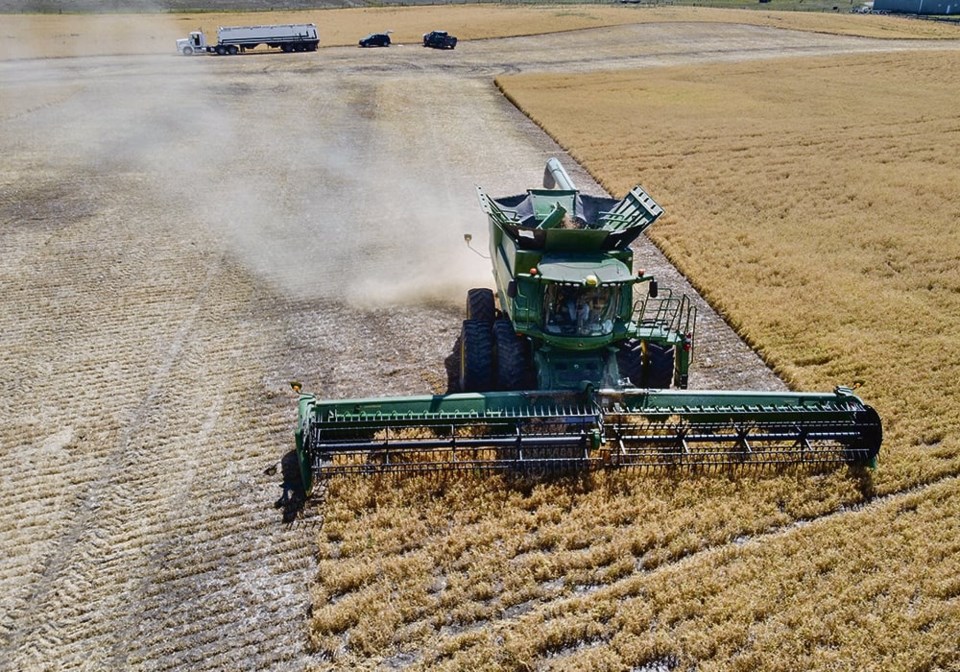WESTERN PRODUCER — As the northern hemisphere’s crops pour into bins and terminals, they’re heading into a global grain market and general economic conditions that create a murky picture for the next few months.
Some situations are disruptive but familiar dynamics, while others are new phenomena that nobody can easily assess.
Underlying many is the impact of inflationary spikes around the world on currency exchange spreads. As the relative currency values swing, so can export and import flows, and that directly affects grains and meat.
Another current impact that’s already significant but could become much more so is the impact of the war in Ukraine, not just in terms of Black Sea grain shipping but also in changing the flows of major export crops.
One internet search that can bring up a lot of hits any year is “Argentina crisis”. That is true this year.
Argentina’s current inflation rate is around 100 percent, something that can have a big impact on farmers’ behaviour. When the peso is in freefall, grain in the bin is like United States dollars in the bank, and that’s how farmers often act, keeping their grain at home and refusing to turn grain into pesos.
Right now, much of the Argentine economy is running on U.S. dollars, and a conservative presidential candidate is calling for the abolition of the country’s central bank and the U.S. “dollarization” of the economy, but for now, the peso and the roaring inflation rate are likely to keep Argentine grain marketing as much of a currency hedging strategy as a market, cash flow or bin management plan.
Turkey’s wacko central bank experiment — propelled by populist strongman President Recep Tayyip Erdogan’s personal belief that slashing interest rates during inflationary times would help the economy and strengthen the Turkish lira — didn’t work, to put it mildly.
The government is now allowing interest rates to rise gently, but is uncomfortably juggling the hot potato of a popular savings program that guarantees the value of Turkish people’s lira deposits in essentially U.S. dollar terms, which has caused the government to cash in enormous amounts of foreign exchange reserves and is pushing the central bank toward printing money to cover the deposit program’s costs.
This could affect agricultural markets because Turkey is an important producer of crops like durum and many pulses, and is a trading hub for numerous other crops coming from central Asia, the Middle East, and the Mediterranean.
With crops seeming like a harder currency than the lira or other regional forms of cash, the same weird dynamics that affected Argentine corn, wheat and soybeans could play a factor in Turkey this winter.
The Russian ruble has recently joined the pack of “currencies in crisis,” after holding up well during the first year of the invasion of Ukraine and the vast spread of sanctions imposed on Russia by western powers.
The sanctions helped bolster the ruble for a while, by slashing imports of foreign goods to Russia, and as Russia showed itself adept at finding alternative routes to export oil and natural gas to countries like China and India, but those dynamics are unravelling.
Weaker oil prices combined with increasing imports of foreign goods have hammered the ruble in the past couple of months, forcing the central bank to intervene to stop the slide. It was already running an 8.5 percent bank rate, but boosted that to 12 percent after the ruble slid.
For Russia, boosting the exports of goods priced in anything but rubles will be vital for both its government and people, but many of the easy commodity reroutings and adaptations have probably already occurred.
Meanwhile, Russia’s clearest path to the world grain markets is looking more and more risky.
The world markets, and the world’s poorest people, are anxiously watching the escalating violence and increasing threats to grain shipments for the Black Sea, which is vital for both Russian and Ukrainian grain exports.
The Black Sea grain deal allowed millions of tonnes of Russian and Ukrainian grain to reach world markets in 2022-23, but that deal died July 17. Russia began threatening Ukrainian exports and directly striking Ukrainian grain terminals with missiles, squeezing Ukraine’s ability to get its grain out onto world markets. It has also harassed ships attempting to visit Ukrainian ports, including a raid on a Turkish ship that one western military luminary denounced as piracy.
Ukraine, unlike its severely restrained behaviour in 2022, has begun threatening Russian commodity exports this time, conducting a boat-drone strike on a Russian oil tanker and declaring Russian Black Sea ports to be war risk areas, complicating their ability to export grain and boosting insurance costs.
A new grain deal could come. Naval actions could increase. The pressure on Black Sea grain exports and hungry people relying upon them could escalate.
The world has relied upon China’s economy powering ahead, no matter the problems in the West. No longer. China is in the grips of an economic slump, demographic decline, a youth employment crisis and fears of stagflation.
Rather than boosting optimism for world grain prices and demand, China’s present situation is throwing a pessimistic pall onto the outlook.
You can no longer count on social media to deliver important news to you. Keep your news a touch away by bookmarking SASKTODAY.ca's homepage at this link.
Here's why you should bookmark your favourites.
Subscribe to SASKTODAY.ca newsletter to get our daily news to your inbox.




